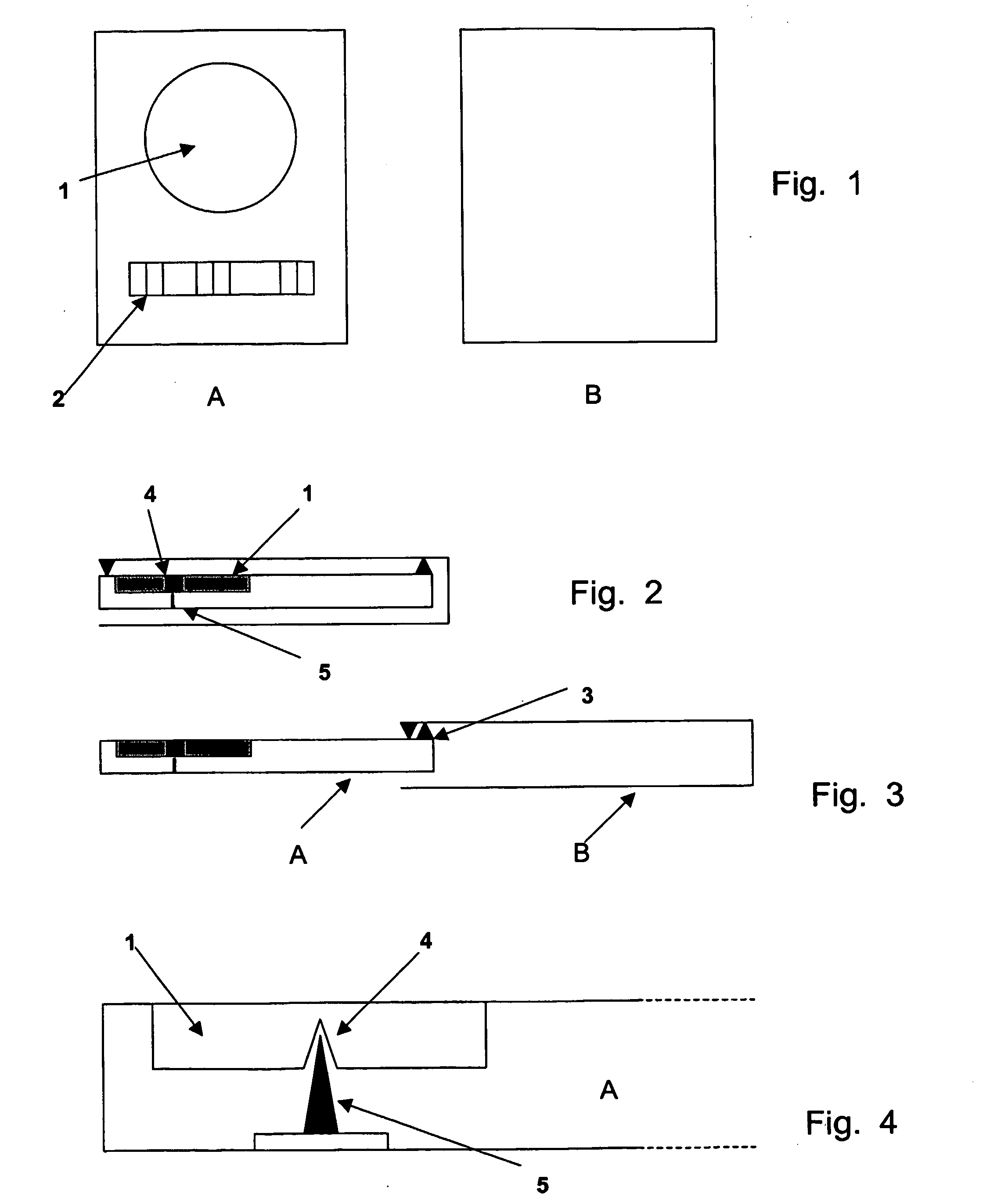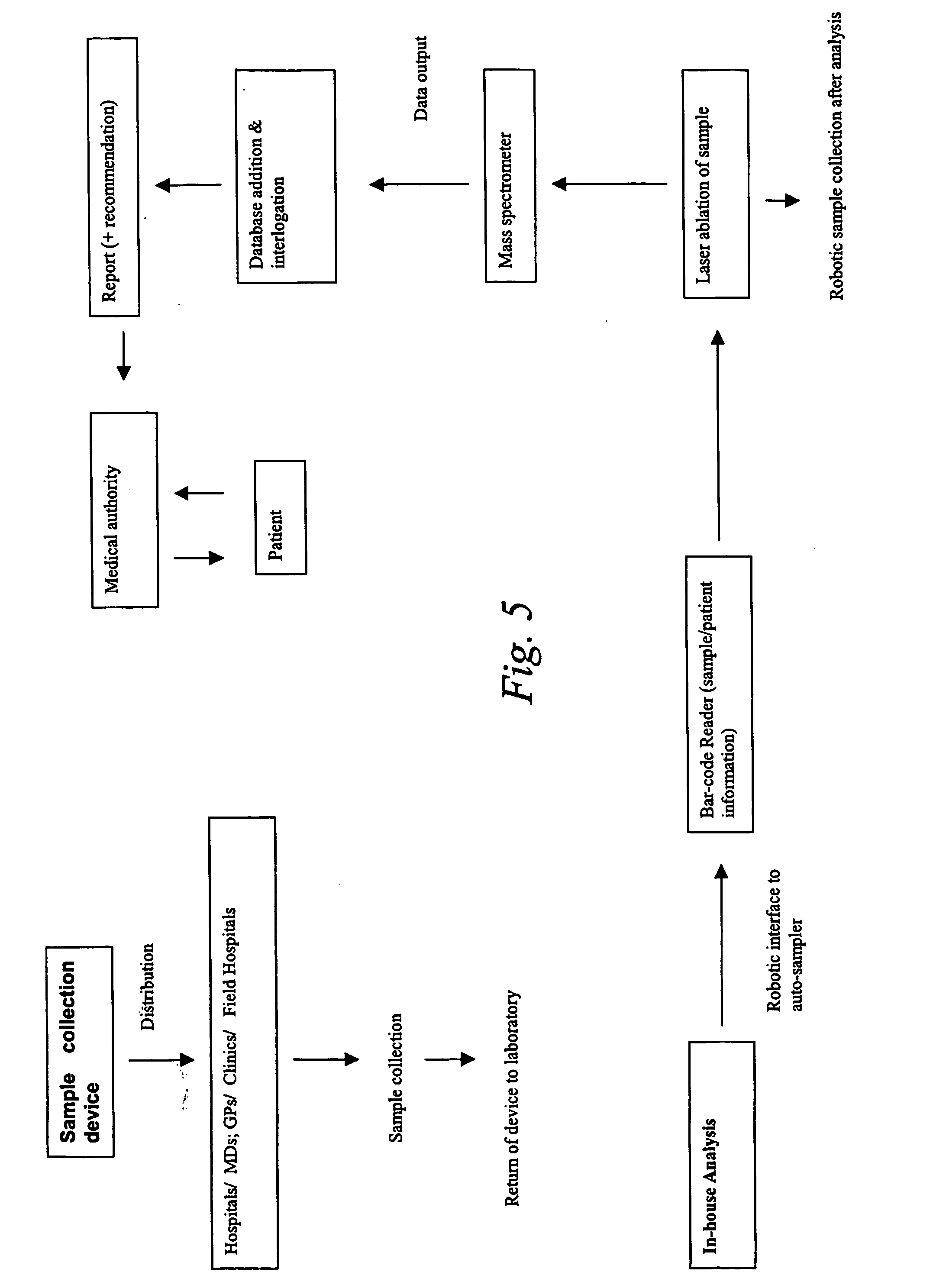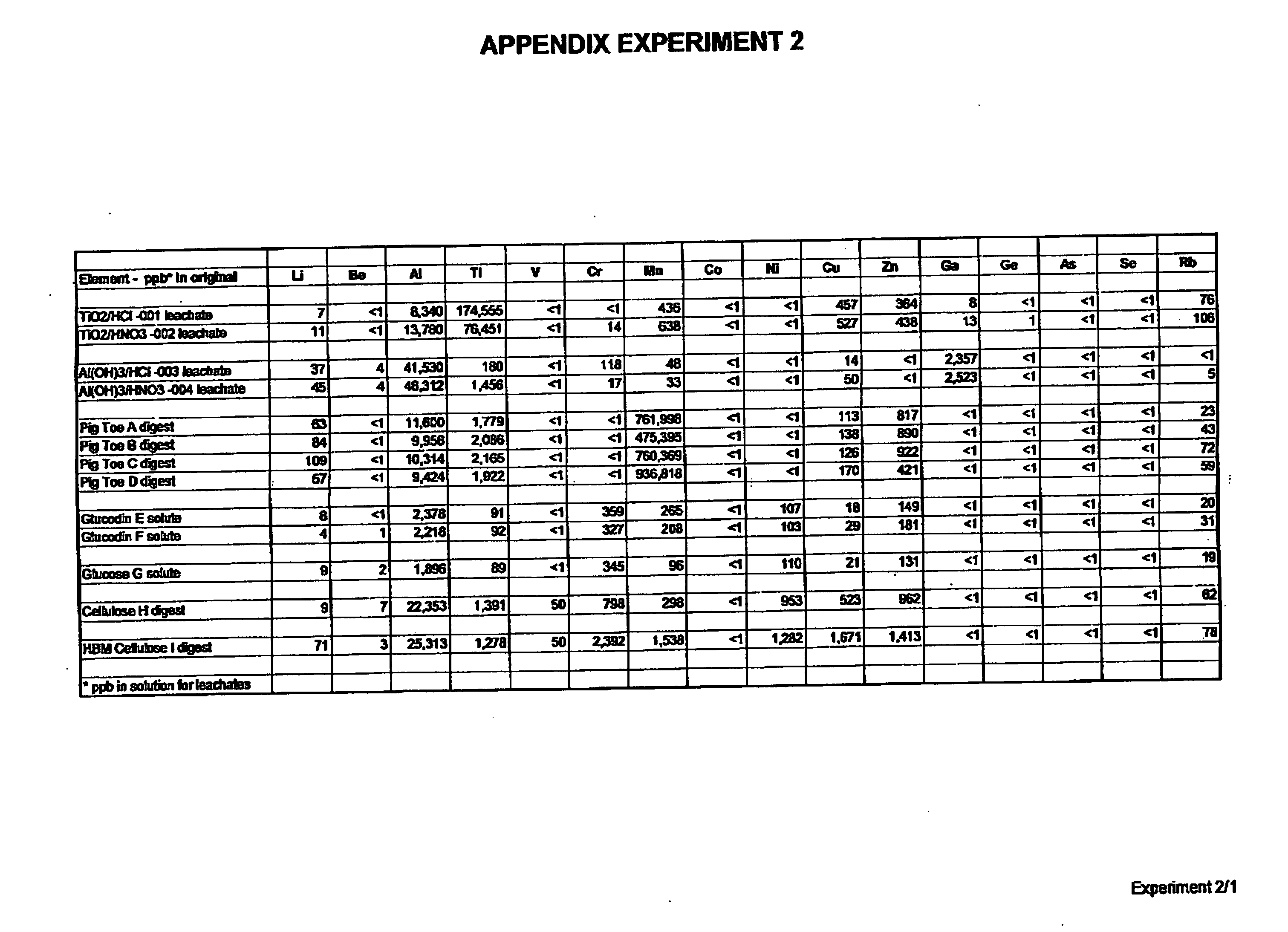Sample collecting device and mass spectrometry of device
a mass spectrometry and sample collection technology, applied in the field of sample collection device and mass spectrometry of device, can solve the problems of increasing anthropogenic chemical damage to the soil throughout the world, threatening the existence of many plants and animals, and growing food crops, so as to facilitate matrix matching
- Summary
- Abstract
- Description
- Claims
- Application Information
AI Technical Summary
Benefits of technology
Problems solved by technology
Method used
Image
Examples
example 1
Sample Collection and Application
[0080] Samples may be collected and applied to a chosen collection matrix of the present invention in a conventional manner well known in the art.
[0081] For example, blood from a subject may be collected using a kit which comprises a shielded, retractable, spring loaded ‘pricker’, as part of the sample kit, which also includes a sealed, alcohol-saturated wipe, or swab, for pre-cleaning the skin area to be pricked to avoid unnecessary sample contamination.
[0082] It will be understood however that collection of samples of other body fluids, such as urine and sweat, or other fluids such as water or oil and other lubricants, will not require most of the components stipulated above for blood collection, but it will nevertheless be important to exclude contaminants. Conventional techniques for this will be known to those skilled in the art.
[0083] The fluid sample, which ever fluid may be of interest, can be applied to the collection matrix for analysis...
example 2
Sample Collection Device
[0085] An example of one type of sample collection device of the present invention, particularly suitable for collection of a blood sample, incorporates an inert fluid absorption matrix, most preferably a fibrous cellulose matrix (Whatman 540, but also 541, 542 and other cellulose filter papers, Whatman international Ltd, Maidstone, England), typically shaped in the form of a small tablet-size disc. The matrix is affixed to or encased within a small, lightweight, disposable or re-cyclable holder (disc holder or solid support material). Ideally the holder is made of relatively rigid material (for example plastic, cardboard or similar material). The device is designed so that a drop of blood or body fluid can be placed on the absorption matrix and the device sealed at the site of collection. Thus immobilized sample can be easily transported via post or courier to a sample analysis center and / or stored.
[0086] Of course the device may be used for other samples,...
example 3
Sample Analysis System
[0101] Traditionally, quantitation in LA-ICP-MS has been approached by controlling the power coupling the laser to the sample, to ensure uniform ablation characteristics and transfer of uniform amounts of solid to the analytical plasma. While this has much to recommend it when the nature of the matrix can be assured (eg. glass or similar), there are significant problems associated with standardisation of the coupling and transfer efficiency when matrices are not uniform. Furthermore, when the surface characteristics of the sample also vary it is extremely difficult to ensure uniform ablation.
[0102] Until the present invention laser ablation ICP-MS technology has been at best a semi-quantitative technique and more usually a comparative technique for the determination of trace element levels in any solid material. In this embodiment of the invention quantitation in LA-ICP-MS has been approached by quantitation of the amount of debris (ablated or ionised materia...
PUM
 Login to View More
Login to View More Abstract
Description
Claims
Application Information
 Login to View More
Login to View More - R&D
- Intellectual Property
- Life Sciences
- Materials
- Tech Scout
- Unparalleled Data Quality
- Higher Quality Content
- 60% Fewer Hallucinations
Browse by: Latest US Patents, China's latest patents, Technical Efficacy Thesaurus, Application Domain, Technology Topic, Popular Technical Reports.
© 2025 PatSnap. All rights reserved.Legal|Privacy policy|Modern Slavery Act Transparency Statement|Sitemap|About US| Contact US: help@patsnap.com



